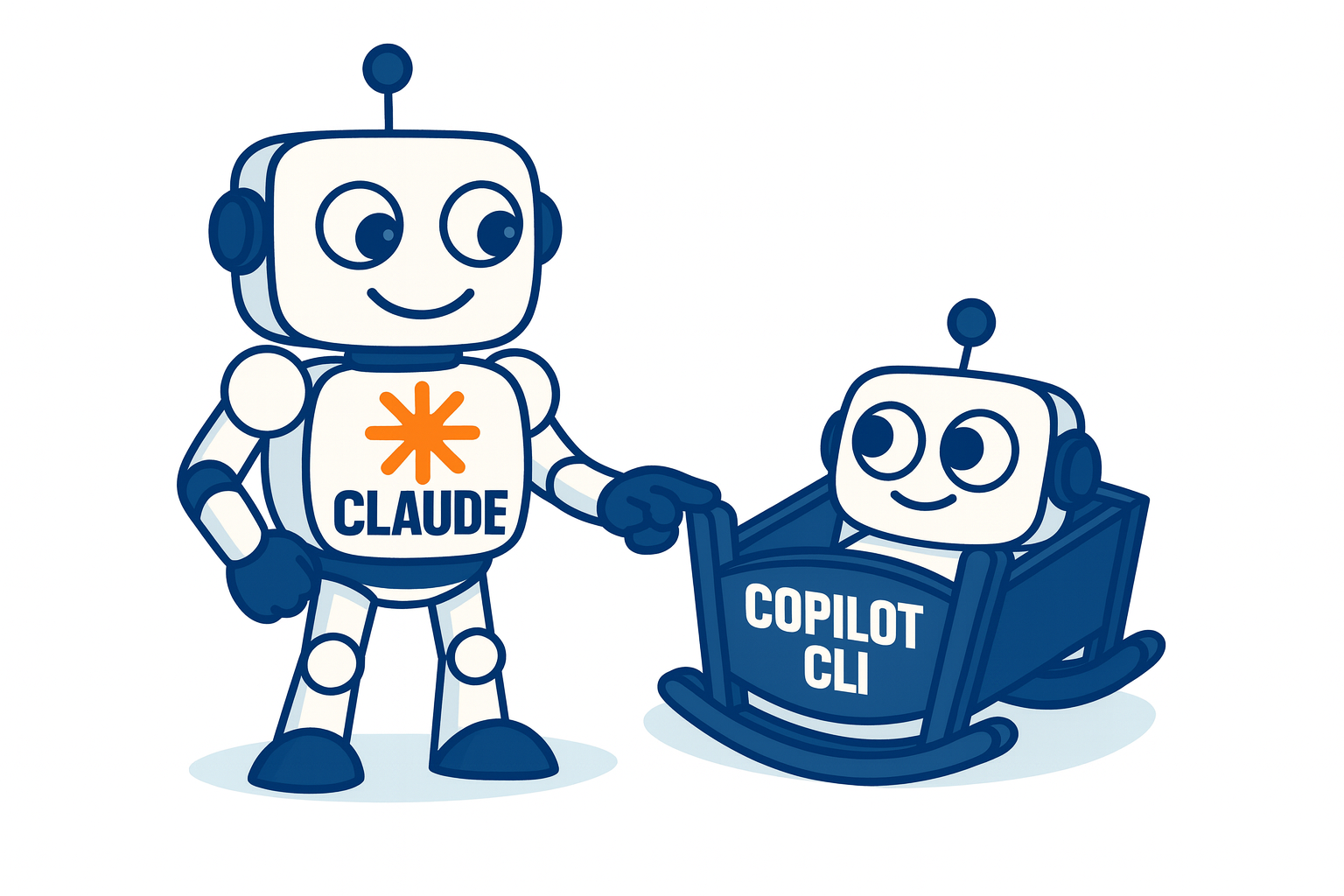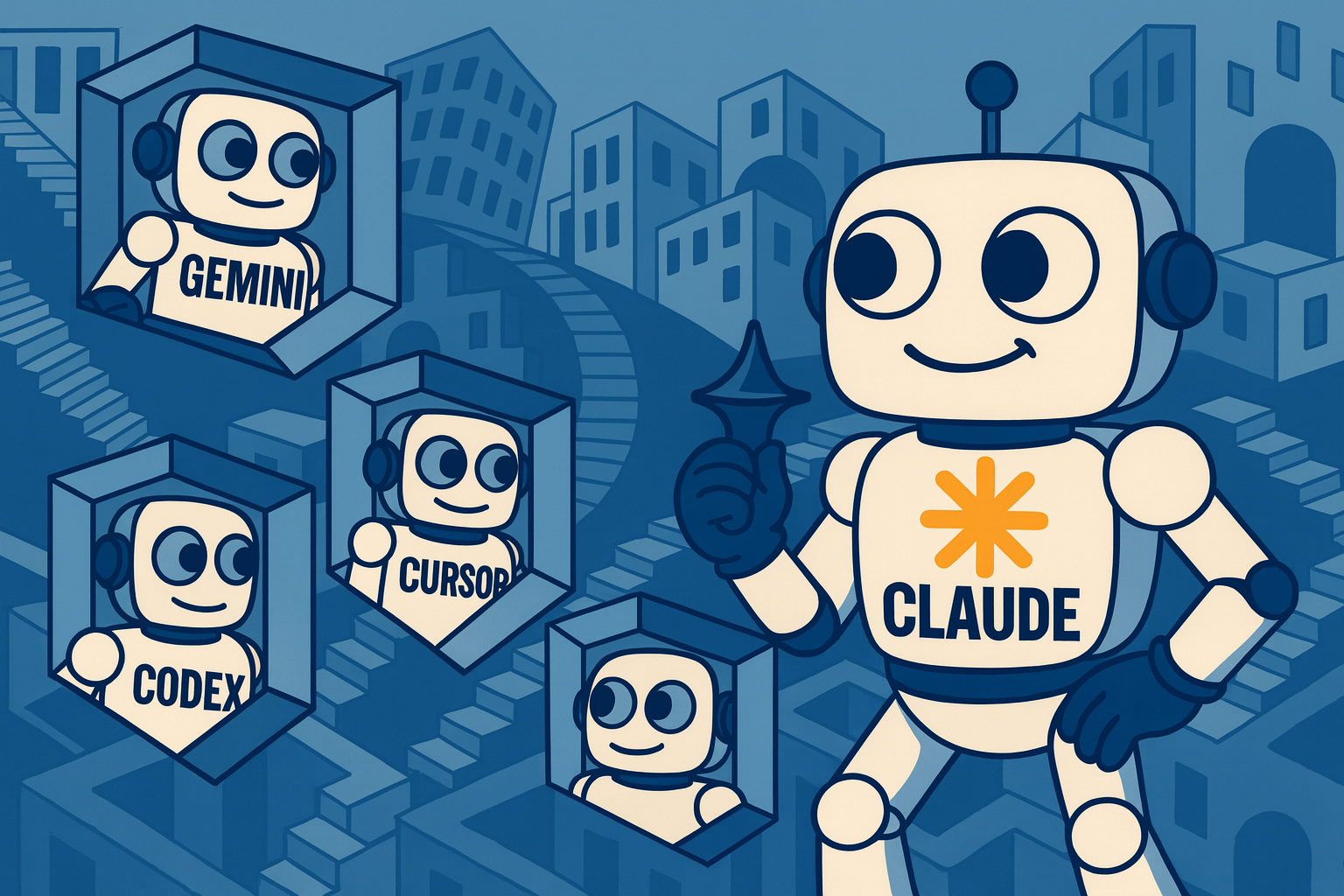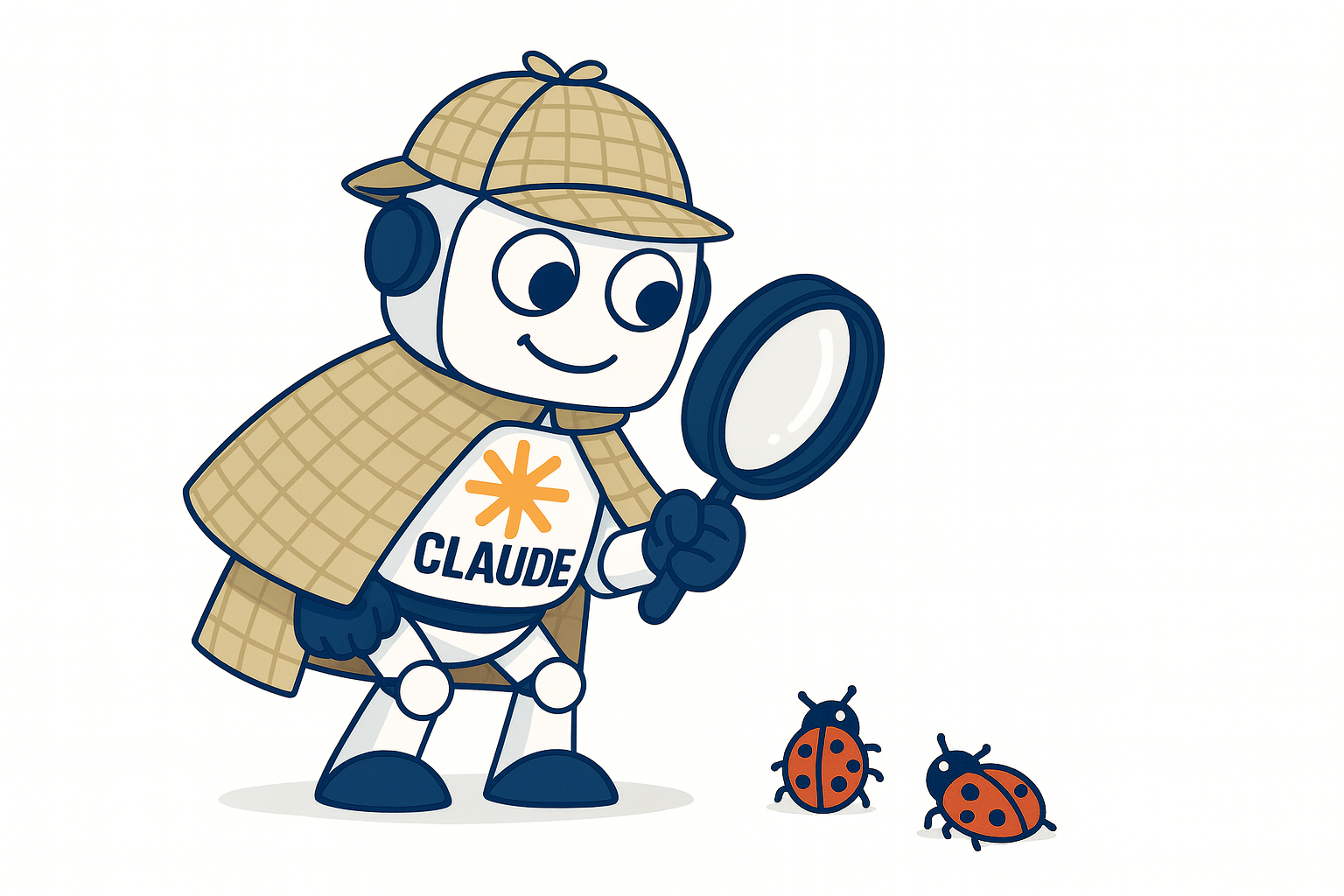Code-Vibing with AI: Building a Pico-8 Game Without Learning the Language

Last week, I stumbled upon Pico-8 while browsing retro gaming communities. As someone who plays classic games on handheld devices like the Miyoo Mini Plus and Anbernic consoles, the idea of a “fantasy console” immediately caught my attention. But here’s the thing—I had zero interest in learning Lua or spending weeks mastering Pico-8’s constraints.
So I thought: what if I just “code-vibe” with Claude Code to build a complete game? No tutorials, no language learning, just pure AI-assisted development. The result? A fully functional Mastermind game where the code works flawlessly but the art… well, let’s just say AI hasn’t figured out pixel art yet.
This isn’t about AI replacing developers. It’s about understanding what AI can do exceptionally well (code logic) and where it completely falls apart (artistic creativity). Here’s what I learned from building a Pico-8 game without knowing the language.
🎮 What is Pico-8?
Pico-8 is a fantasy console—an imaginary video game system with intentional limitations that spark creativity. Think of it as what the Game Boy could have been if it had perfect programming tools and a vibrant online community.
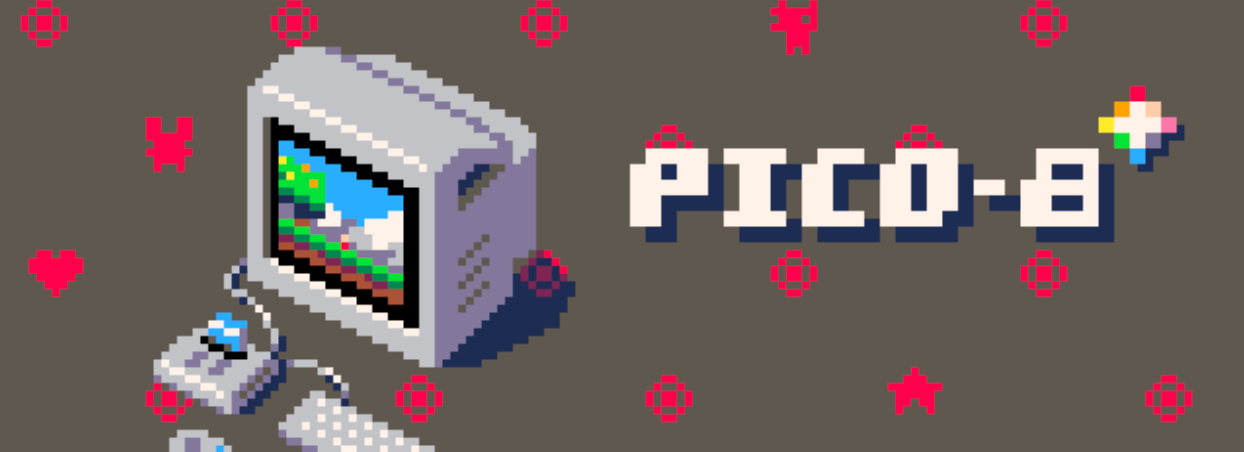
The Beautiful Constraints
- Display: 128x128 pixels
- Colors: 16-color palette
- Sound: 4-channel chip tune synthesizer
- Code: 8,192 tokens of Lua
- Sprites: 256 8x8 pixel sprites
- Map: 128x64 tile map
These limitations aren’t bugs—they’re features. They force you to be creative, to make every pixel count, and to build games that feel genuinely retro. The Pico-8 community has created thousands of games, from platformers to RPGs to puzzle games, all within these constraints.
What really appealed to me was that Pico-8 games run everywhere—not just on desktop, but on handheld retro gaming devices like the Miyoo Mini Plus, Anbernic RG35XX, and other pocket-sized consoles that support custom firmware. There’s something magical about creating a game on your laptop and playing it on a tiny handheld device an hour later.
🤖 The Experiment: Code-Vibing with Claude Code
I wanted to build a Mastermind game—the classic code-breaking puzzle where you guess a secret pattern of colored pegs. The game gives you feedback after each guess: black pegs for correct colors in correct positions, white pegs for correct colors in wrong positions.
My approach was simple: describe what I wanted, let Claude Code do the heavy lifting, and iterate based on testing.
The Development Process
Phase 1: Core Game Logic
Me: "Create a Pico-8 Mastermind game with 4 colors and 6 attempts."
Claude: *Generates complete game logic with initialization, input handling, and feedback*
Within minutes, I had working code that:
- Generated random secret codes
- Handled player input for selecting colors
- Calculated feedback (correct position vs correct color)
- Managed game state (playing, won, lost)
- Displayed the game board and attempts
Here’s a simplified snippet of what Claude Code generated:
function _init()
secret={flr(rnd(6))+1,flr(rnd(6))+1,
flr(rnd(6))+1,flr(rnd(6))+1}
attempts={}
current_guess={1,1,1,1}
cursor=1
game_state="playing"
end
function _update()
if game_state=="playing" then
if btnp(⬅️) then cursor=max(1,cursor-1) end
if btnp(➡️) then cursor=min(4,cursor+1) end
if btnp(⬆️) then current_guess[cursor]=(current_guess[cursor]%6)+1 end
if btnp(⬇️) then current_guess[cursor]=((current_guess[cursor]-2)%6)+1 end
if btnp(🅾️) then submit_guess() end
end
end
Phase 2: Polish and Features
Me: "Add a title screen and instructions."
Claude: *Implements menu system with game flow*
Me: "Show the secret code when the game ends."
Claude: *Adds reveal logic with proper game state handling*
Me: "Make the feedback clearer with different symbols."
Claude: *Updates rendering to use distinct visual indicators*
The code just… worked. Every iteration was functional. No syntax errors, no logic bugs, no weird edge cases. Claude Code understood Pico-8’s limitations and API perfectly.
What Impressed Me About the Code
- Proper Pico-8 conventions: Used
_init(),_update(),_draw()correctly - Efficient token usage: Code stayed well under the 8,192 token limit
- Clean state management: Game states transitioned smoothly
- Input handling: Button presses felt responsive and natural
- Edge cases handled: Prevented invalid moves and game state corruption
I literally wrote zero lines of Lua. I just described features in natural language, and Claude Code translated my intent into working game logic.
🎨 Where AI Hit the Wall: The Art Problem
Now here’s where things got interesting—and by interesting, I mean hilariously broken.
Me: "Let's make the UI look more retro, give it that 80s arcade style."
Claude: *Generates updated graphics with retro styling*
Me: "The lines are overlapping and the chips look weird."
Claude: *Tries again, visual bugs persist*
Me: "Can you fix the overlapping elements?"
Claude: *Third attempt, still introducing visual glitches*
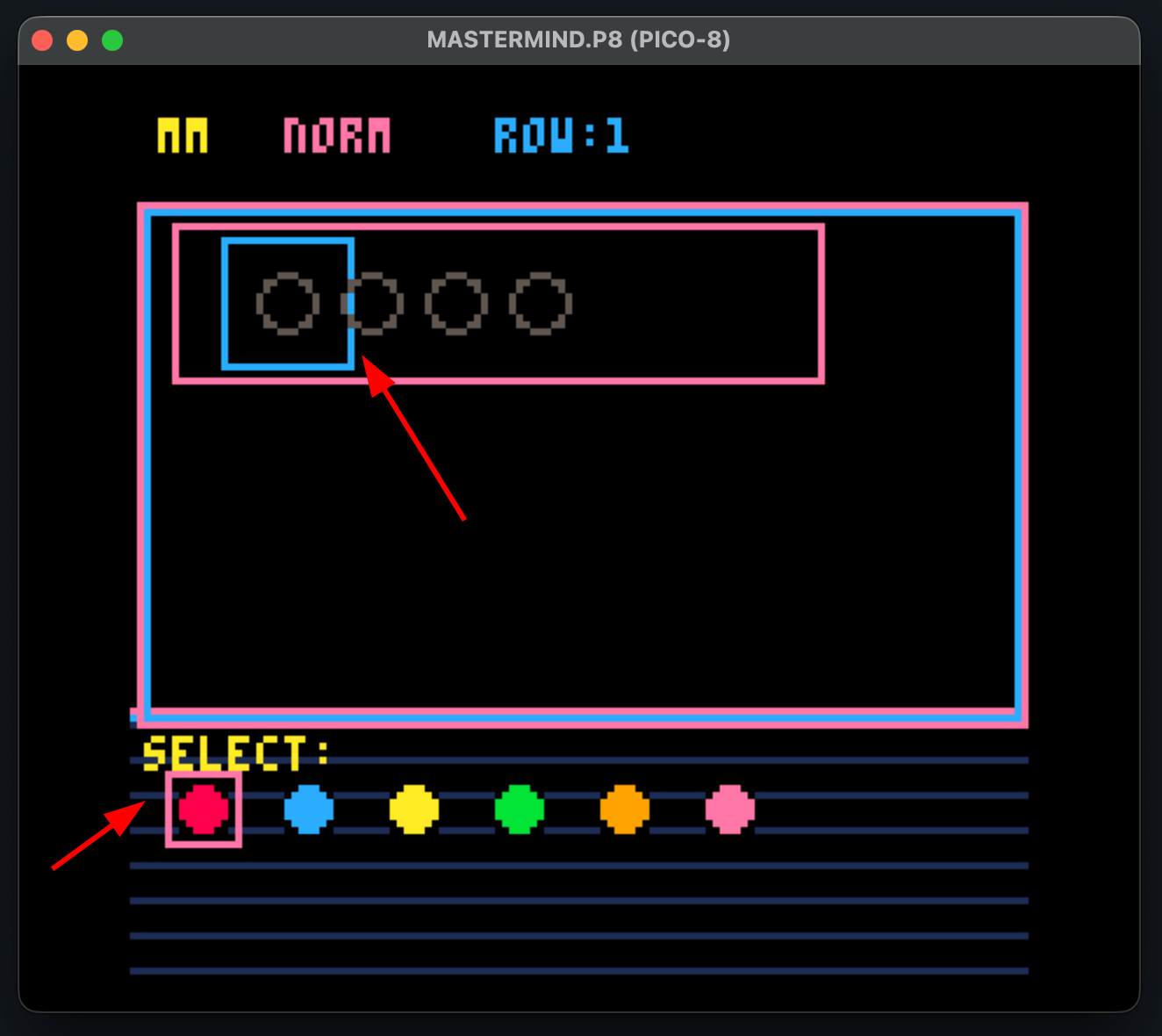
The sprites were a mess. Colors bled into each other, shapes didn’t align properly, and the overall aesthetic looked like a glitch art project gone wrong.
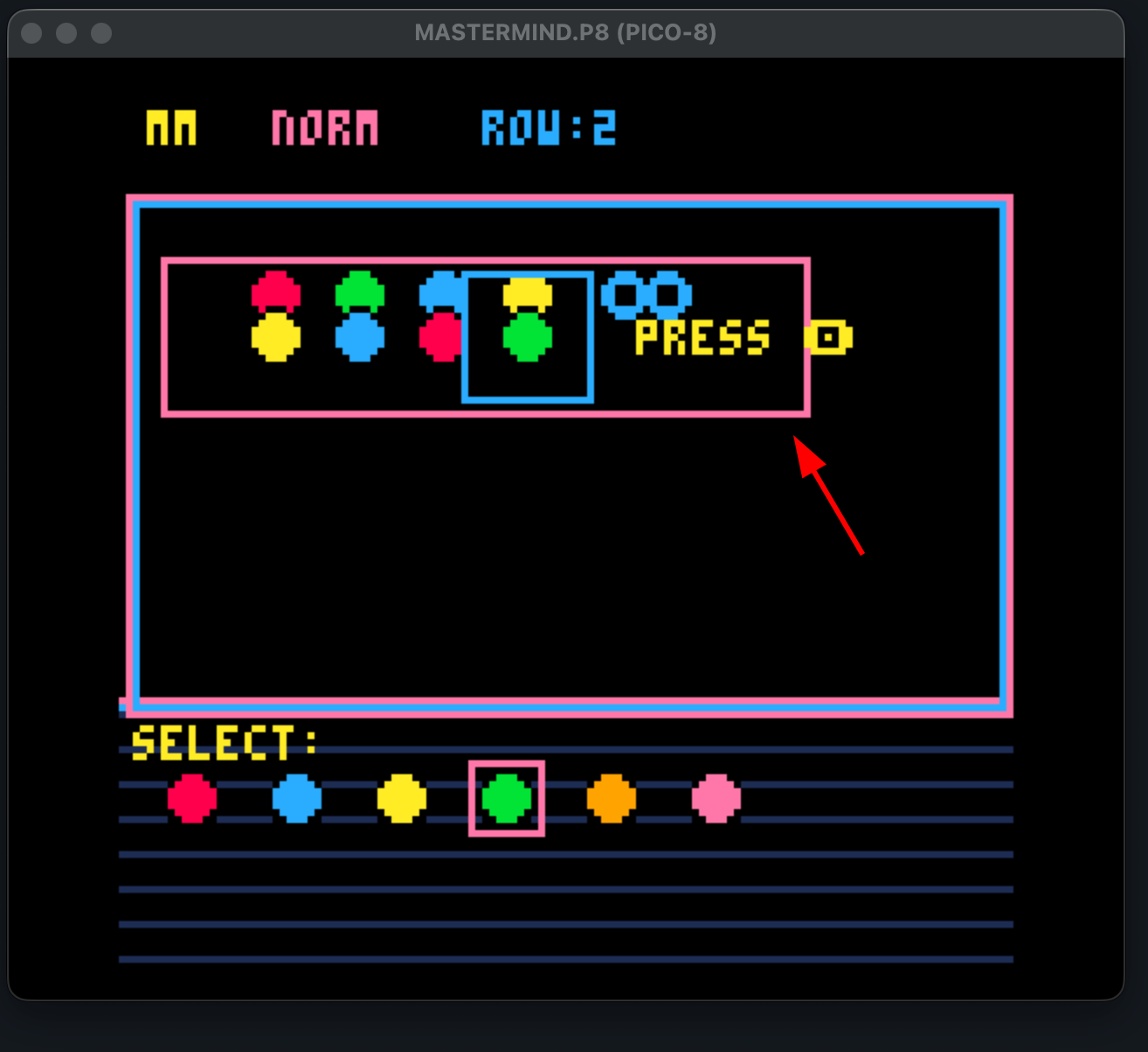
Why AI Fails at Pixel Art
After multiple iterations, I realized the fundamental problem: Claude Code (and current general-purpose AI models) lack spatial-visual reasoning for pixel-level design.
The AI could:
- ✅ Generate perfect code logic
- ✅ Understand game mechanics
- ✅ Handle complex state management
- ✅ Optimize for Pico-8’s constraints
But it couldn’t:
- ❌ Visualize how pixels form recognizable shapes
- ❌ Understand aesthetic coherence
- ❌ Apply consistent design language
- ❌ Create sprites that “feel” like game assets
Important distinction: This limitation is specific to current general-purpose AI models like Claude Sonnet 4.5. Specialized AI art tools like Stable Diffusion, DALL-E, or Midjourney excel at image generation, but they aren’t integrated into coding workflows and don’t understand Pico-8’s specific pixel format constraints.
The Pragmatic Decision
Here’s where the “code-vibing” philosophy hit a wall. Fixing the visual bugs would have required diving deep into the sprite code, understanding how AI had structured the graphics, and manually debugging pixel-level issues. That’s the opposite of code-vibing—it defeats the whole purpose of building without learning the underlying implementation.
So I made a practical choice: I published the game with the original, clean design from before I asked for the 80s retro styling. The initial AI-generated graphics were simple but functional. The “improved” versions introduced bugs I couldn’t easily fix without breaking the code-vibing approach.
This taught me something crucial: AI dramatically accelerates code development, but artistic “improvements” can introduce complexity that requires deep technical knowledge to fix. When AI visual changes break things, you either need to understand the code deeply (losing the code-vibing benefit) or revert to what worked. I chose the latter.
🛠️ What I Actually Learned: The Pico-8 Console
While Claude Code handled the coding, I still had to learn Pico-8’s development environment. The console commands became my daily tools:
# Load and run your game
load mastermind.p8
run
# Save your work
save
# Export to web or binary
export mastermind.html
export mastermind.bin
# Sprite and map editors
# Press ESC to toggle between code and sprite editor
# Sound and music tools
# Use the music editor to create chip tune soundtracks
# Debug commands
printh("debug: "..tostr(value)) -- Print to console
stop() -- Pause execution
Essential Workflow Commands
Development cycle:
- Edit code or sprites in Pico-8
- Press
Ctrl+Rto run immediately - Test gameplay and identify issues
- Press
ESCto return to editor - Iterate
Publishing:
# Create web playable version
export mastermind.html
# Create standalone binary
export mastermind.bin
# Export to PNG (code + sprites embedded)
save mastermind.p8.png
The console became my primary interface. While Claude Code wrote the logic, I was constantly running, testing, and tweaking based on how the game actually felt to play.
🚀 Publishing the Game: From Local to Lexaloffle
Once the game was playable and the art was fixed, I published it to the Pico-8 community platform: BBS Lexaloffle.
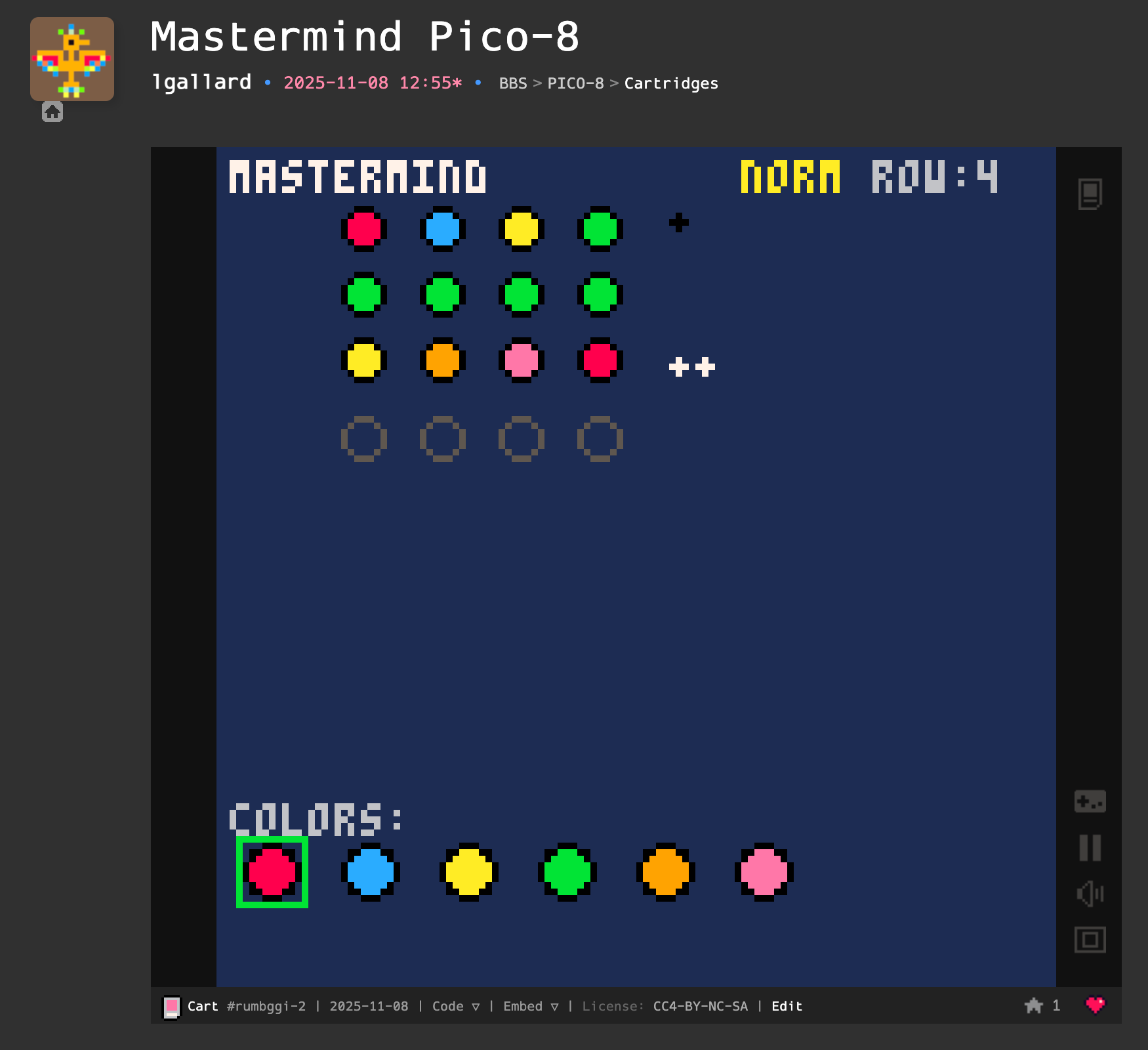
The publishing process was surprisingly straightforward:
- Create an account on Lexaloffle BBS
- Export the cartridge as a PNG file (
save mastermind.p8.png) - Upload to BBS with description and screenshots
- Share with the community and gather feedback
What’s fascinating about Pico-8’s ecosystem is the cartridge format. Games are distributed as PNG images that contain the code, sprites, music, and map data. You can literally share a game as an image file, and other Pico-8 users can load and play it immediately.
The Community Response
Publishing on Lexaloffle gave me immediate access to:
- Playable web version: Anyone can play directly in their browser
- Download options: Users can grab the
.p8file and run it locally - Community feedback: Other developers provide suggestions and bug reports
- Discoverability: Games appear in the BBS feed and search results
The Pico-8 community is incredibly welcoming to newcomers. Despite my game being a simple Mastermind implementation built with AI assistance, people played it, left encouraging comments, and even suggested improvements.
🎯 The Bigger Picture: What This Means for Development
This experiment revealed something important about AI-assisted development in 2025: we’re entering an era of “code-vibing” where developers can create functional software in languages they don’t formally know.
The New Development Model
Traditional Approach:
- Learn language syntax and conventions
- Study framework documentation
- Write code manually
- Debug and iterate
- Optimize and polish
AI-Assisted Approach:
- Describe what you want in natural language
- AI generates functional code
- Test and provide feedback
- AI iterates based on your input
- You focus on design and experience
When Code-Vibing Works
This approach excels when:
- ✅ The problem domain is well-defined (game logic)
- ✅ The language has clear conventions (Pico-8 API)
- ✅ You can test and validate quickly (run the game)
- ✅ Documentation exists for the AI to reference
- ✅ Logic matters more than creative assets
When Code-Vibing Fails
The approach struggles with:
- ❌ Visual/artistic creativity (sprites, animations)
- ❌ Highly subjective design decisions (UI aesthetics)
- ❌ Novel problems without existing patterns
- ❌ Domains requiring specialized expertise
- ❌ Physical or spatial reasoning tasks
The Hybrid Reality
The future isn’t “AI replaces developers”—it’s “AI handles code, humans handle creativity.”
For my Pico-8 game:
- AI-generated: All game logic, state management, input handling
- Human-created: Sprites, color schemes, game feel, design decisions
This division makes sense. AI excels at structured, logical tasks with clear rules. Humans excel at creative, aesthetic, and experiential decisions.
💡 Key Takeaways for Developers
After building this game, here’s what I learned about AI-assisted development:
1. AI Coding is Genuinely Excellent
Claude Code didn’t just generate working code—it generated good code. Proper conventions, clean structure, efficient logic. I could have written this myself after learning Lua, but it would have taken significantly longer.
2. Art is Still a Human (or Specialized AI) Domain
General-purpose AI models struggle with pixel-level visual design. You’ll need:
- Manual sprite creation
- Specialized AI art tools (Stable Diffusion, DALL-E)
- Collaboration with actual artists
3. You Still Need Domain Understanding
Even though I didn’t write Lua, I needed to:
- Understand Pico-8’s constraints
- Test the game and identify issues
- Communicate feedback clearly
- Make design decisions
Code-vibing isn’t passive—it’s an active collaboration where you guide the AI’s output.
4. Iteration is Fast and Painless
Traditionally, making changes requires:
- Finding the right code section
- Understanding existing implementation
- Rewriting logic
- Testing for regressions
With AI assistance:
- Describe the change in natural language
- AI implements the modification
- Test immediately
- Iterate until perfect
5. The Learning Curve Shifts
Instead of learning:
- Language syntax
- Framework APIs
- Common patterns
You learn:
- How to describe problems clearly
- How to test and validate effectively
- How to guide AI iterations
- Domain-specific knowledge
This is a different skill set, but arguably more valuable in an AI-assisted world.
🔮 Getting Started with Pico-8 and AI Development
If this experiment inspired you to try building your own Pico-8 game with AI assistance, here’s how to start:
Prerequisites
- Get Pico-8: Purchase from Lexaloffle ($15)
- Install Claude Code: Free for basic usage, Pro for unlimited
- Optional: Retro handheld device for testing (Miyoo Mini Plus, Anbernic)
Your First AI-Generated Game
Week 1: Simple Game Loop
Prompt: "Create a basic Pico-8 game with player movement and a game over screen."
Week 2: Add Mechanics
Prompt: "Add collision detection and score tracking."
Week 3: Polish
Prompt: "Add a title screen, instructions, and end game sequence."
Week 4: Manual Art Pass
- Open Pico-8’s sprite editor
- Create or refine visual assets
- Learn color palette constraints
Recommended First Projects
- Flappy Bird clone: Simple physics and collision
- Snake game: Grid-based movement and growth
- Memory matching: Card flipping and state management
- Breakout: Paddle movement and ball physics
Start simple, iterate quickly, and don’t stress about art until the gameplay feels right.
🧠 The Honest Assessment
Let me be clear about what this experiment proved and didn’t prove:
What Worked
- Code generation: Claude Code produced production-quality Lua code
- Rapid iteration: Changes happened in minutes, not hours
- Learning efficiency: I understood Pico-8 concepts without formal study
- Functional completeness: The game logic was genuinely good
What Didn’t Work
- Sprite generation: AI-created graphics were unusable
- Aesthetic decisions: AI couldn’t judge “good” vs “bad” design
- Creative direction: Human judgment was essential for game feel
The Limitation Reality
This isn’t about current AI being bad at art—it’s about the type of AI I used. General-purpose language models like Claude Sonnet 4.5 aren’t designed for pixel-perfect visual creation.
Specialized AI art tools exist and work well:
- Stable Diffusion: Excellent for concept art and illustrations
- DALL-E 3: Great for stylized game assets
- Midjourney: Perfect for background art and promotional images
But these tools:
- Aren’t integrated into coding workflows yet
- Don’t understand Pico-8’s specific sprite format
- Require manual export and conversion processes
The future is hybrid workflows: AI for code, specialized tools or humans for assets, and human judgment for design decisions.
📚 Resources and Community
If you’re interested in exploring Pico-8 or AI-assisted game development further:
Pico-8 Learning
- Official Manual: Pico-8 User Manual
- Community Forums: BBS Lexaloffle
- Game Collection: Pico-8 Carts
- YouTube Tutorials: Lazy Devs Academy, Nerdy Teachers
AI Coding Tools
- Claude Code: Anthropic Claude
- GitHub Copilot: GitHub Copilot
- Cursor: Cursor IDE
Retro Handhelds
- Miyoo Mini Plus: Compact, affordable, great Pico-8 support
- Anbernic RG35XX: Popular choice with active community
- Retro Game Corps: Setup guides and reviews
Have you tried building games with AI assistance? What’s been your experience with AI-generated art versus code? I’d love to hear about your experiments and whether you’ve found better workflows for handling creative assets in AI-assisted development. Share your thoughts and projects in the comments below.

